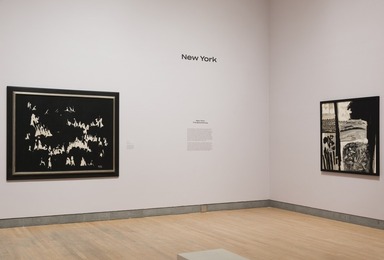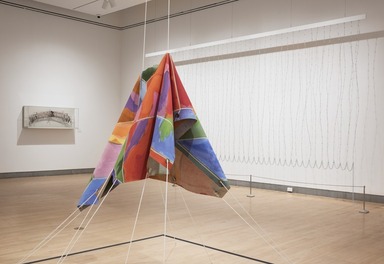

Soul of a Nation: Art in the Age of Black Power, Friday, September 14, 2018 – Sunday, February 03, 2019 (Image: DIG_E_2018_Soul_Of_A_Nation_01_PS11.jpg Photo: Jonathan Dorado photograph, 2018)

Soul of a Nation: Art in the Age of Black Power, Friday, September 14, 2018 – Sunday, February 03, 2019 (Image: DIG_E_2018_Soul_Of_A_Nation_02_PS11.jpg Photo: Jonathan Dorado photograph, 2018)
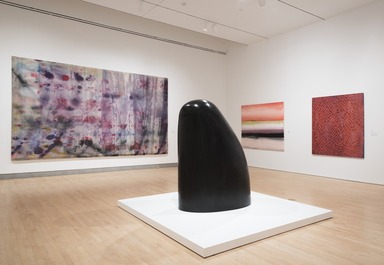
Soul of a Nation: Art in the Age of Black Power, Friday, September 14, 2018 – Sunday, February 03, 2019 (Image: DIG_E_2018_Soul_Of_A_Nation_03_PS11.jpg Photo: Jonathan Dorado photograph, 2018)

Soul of a Nation: Art in the Age of Black Power, Friday, September 14, 2018 – Sunday, February 03, 2019 (Image: DIG_E_2018_Soul_Of_A_Nation_04_PS11.jpg Photo: Jonathan Dorado photograph, 2018)

Soul of a Nation: Art in the Age of Black Power, Friday, September 14, 2018 – Sunday, February 03, 2019 (Image: DIG_E_2018_Soul_Of_A_Nation_05_PS11.jpg Photo: Jonathan Dorado photograph, 2018)
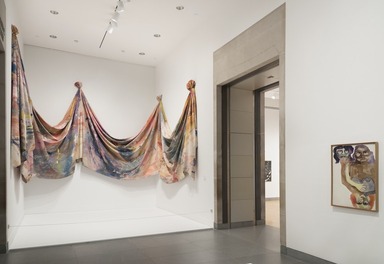
Soul of a Nation: Art in the Age of Black Power, Friday, September 14, 2018 – Sunday, February 03, 2019 (Image: DIG_E_2018_Soul_Of_A_Nation_06_PS11.jpg Photo: Jonathan Dorado photograph, 2018)
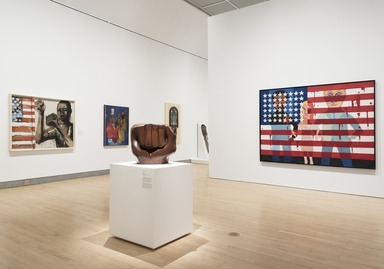
Soul of a Nation: Art in the Age of Black Power, Friday, September 14, 2018 – Sunday, February 03, 2019 (Image: DIG_E_2018_Soul_Of_A_Nation_07_PS11.jpg Photo: Jonathan Dorado photograph, 2018)
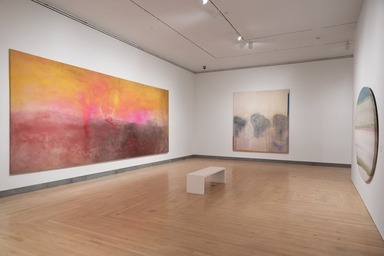
Soul of a Nation: Art in the Age of Black Power, Friday, September 14, 2018 – Sunday, February 03, 2019 (Image: DIG_E_2018_Soul_Of_A_Nation_08_PS11.jpg Photo: Jonathan Dorado photograph, 2018)

Soul of a Nation: Art in the Age of Black Power, Friday, September 14, 2018 – Sunday, February 03, 2019 (Image: DIG_E_2018_Soul_Of_A_Nation_09_PS11.jpg Photo: Jonathan Dorado photograph, 2018)
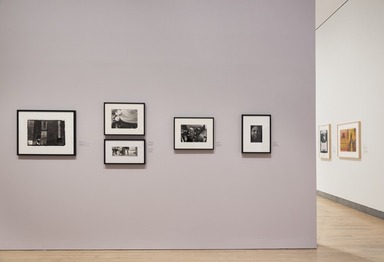
Soul of a Nation: Art in the Age of Black Power, Friday, September 14, 2018 – Sunday, February 03, 2019 (Image: DIG_E_2018_Soul_Of_A_Nation_10_PS11.jpg Photo: Jonathan Dorado photograph, 2018)
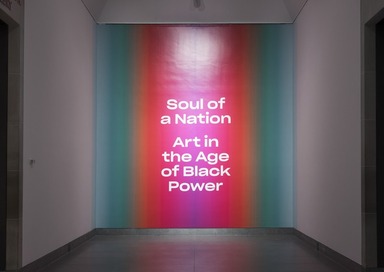
Soul of a Nation: Art in the Age of Black Power, Friday, September 14, 2018 – Sunday, February 03, 2019 (Image: DIG_E_2018_Soul_Of_A_Nation_11_PS11.jpg Photo: Jonathan Dorado photograph, 2018)

Soul of a Nation: Art in the Age of Black Power, Friday, September 14, 2018 – Sunday, February 03, 2019 (Image: DIG_E_2018_Soul_Of_A_Nation_12_PS11.jpg Photo: Jonathan Dorado photograph, 2018)
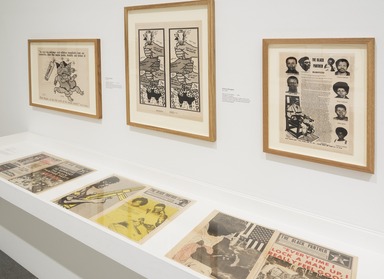
Soul of a Nation: Art in the Age of Black Power, Friday, September 14, 2018 – Sunday, February 03, 2019 (Image: DIG_E_2018_Soul_Of_A_Nation_13_PS11.jpg Photo: Jonathan Dorado photograph, 2018)
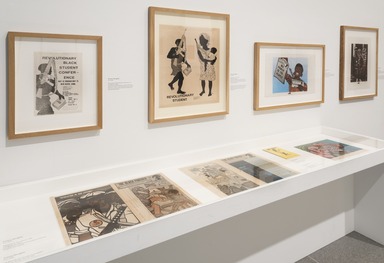
Soul of a Nation: Art in the Age of Black Power, Friday, September 14, 2018 – Sunday, February 03, 2019 (Image: DIG_E_2018_Soul_Of_A_Nation_14_PS11.jpg Photo: Jonathan Dorado photograph, 2018)

Soul of a Nation: Art in the Age of Black Power, Friday, September 14, 2018 – Sunday, February 03, 2019 (Image: DIG_E_2018_Soul_Of_A_Nation_15_PS11.jpg Photo: Jonathan Dorado photograph, 2018)

Soul of a Nation: Art in the Age of Black Power, Friday, September 14, 2018 – Sunday, February 03, 2019 (Image: DIG_E_2018_Soul_Of_A_Nation_16_PS11.jpg Photo: Jonathan Dorado photograph, 2018)
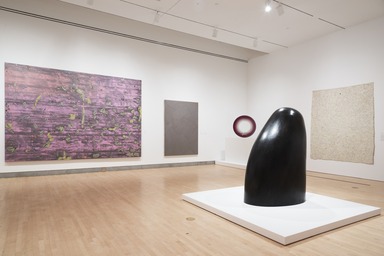
Soul of a Nation: Art in the Age of Black Power, Friday, September 14, 2018 – Sunday, February 03, 2019 (Image: DIG_E_2018_Soul_Of_A_Nation_17_PS11.jpg Photo: Jonathan Dorado photograph, 2018)
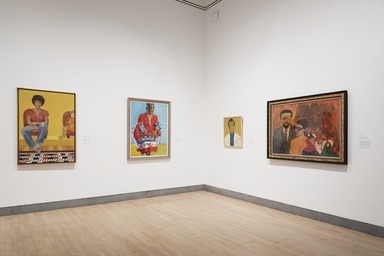
Soul of a Nation: Art in the Age of Black Power, Friday, September 14, 2018 – Sunday, February 03, 2019 (Image: DIG_E_2018_Soul_Of_A_Nation_18_PS11.jpg Photo: Jonathan Dorado photograph, 2018)
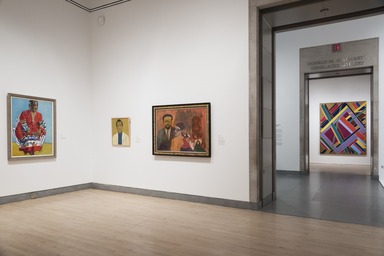
Soul of a Nation: Art in the Age of Black Power, Friday, September 14, 2018 – Sunday, February 03, 2019 (Image: DIG_E_2018_Soul_Of_A_Nation_19_PS11.jpg Photo: Jonathan Dorado photograph, 2018)
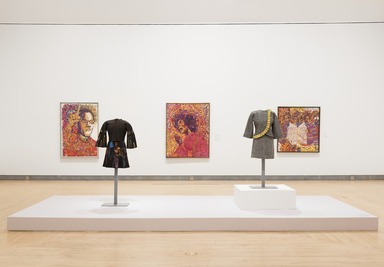
Soul of a Nation: Art in the Age of Black Power, Friday, September 14, 2018 – Sunday, February 03, 2019 (Image: DIG_E_2018_Soul_Of_A_Nation_21_PS11.jpg Photo: Jonathan Dorado photograph, 2018)

Soul of a Nation: Art in the Age of Black Power, Friday, September 14, 2018 – Sunday, February 03, 2019 (Image: DIG_E_2018_Soul_Of_A_Nation_22_PS11.jpg Photo: Jonathan Dorado photograph, 2018)

Soul of a Nation: Art in the Age of Black Power, Friday, September 14, 2018 – Sunday, February 03, 2019 (Image: DIG_E_2018_Soul_Of_A_Nation_23_PS11.jpg Photo: Jonathan Dorado photograph, 2018)
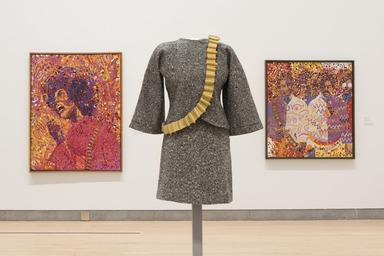
Soul of a Nation: Art in the Age of Black Power, Friday, September 14, 2018 – Sunday, February 03, 2019 (Image: DIG_E_2018_Soul_Of_A_Nation_24_PS11.jpg Photo: Jonathan Dorado photograph, 2018)
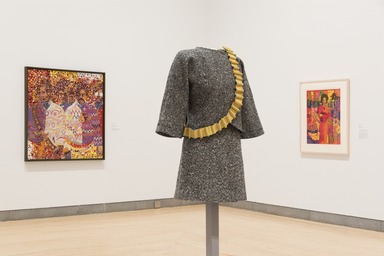
Soul of a Nation: Art in the Age of Black Power, Friday, September 14, 2018 – Sunday, February 03, 2019 (Image: DIG_E_2018_Soul_Of_A_Nation_25_PS11.jpg Photo: Jonathan Dorado photograph, 2018)
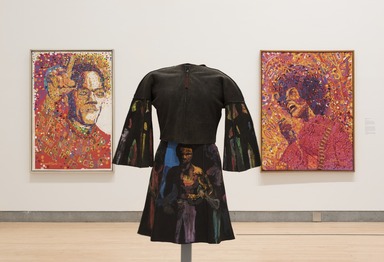
Soul of a Nation: Art in the Age of Black Power, Friday, September 14, 2018 – Sunday, February 03, 2019 (Image: DIG_E_2018_Soul_Of_A_Nation_26_PS11.jpg Photo: Jonathan Dorado photograph, 2018)
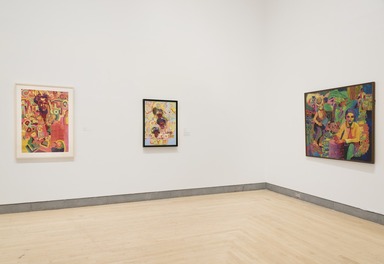
Soul of a Nation: Art in the Age of Black Power, Friday, September 14, 2018 – Sunday, February 03, 2019 (Image: DIG_E_2018_Soul_Of_A_Nation_27_PS11.jpg Photo: Jonathan Dorado photograph, 2018)
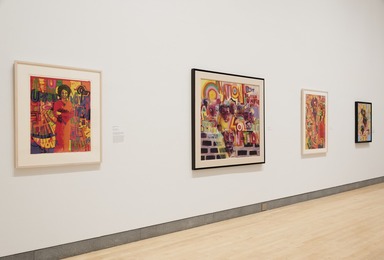
Soul of a Nation: Art in the Age of Black Power, Friday, September 14, 2018 – Sunday, February 03, 2019 (Image: DIG_E_2018_Soul_Of_A_Nation_28_PS11.jpg Photo: Jonathan Dorado photograph, 2018)
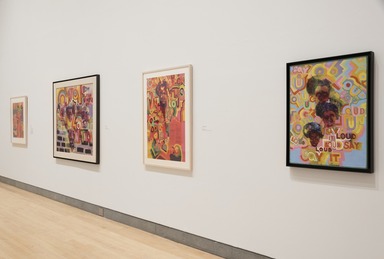
Soul of a Nation: Art in the Age of Black Power, Friday, September 14, 2018 – Sunday, February 03, 2019 (Image: DIG_E_2018_Soul_Of_A_Nation_29_PS11.jpg Photo: Jonathan Dorado photograph, 2018)
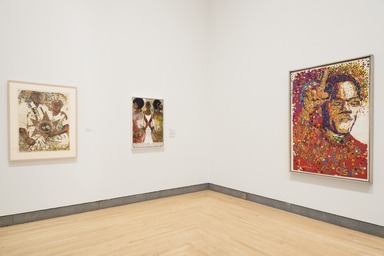
Soul of a Nation: Art in the Age of Black Power, Friday, September 14, 2018 – Sunday, February 03, 2019 (Image: DIG_E_2018_Soul_Of_A_Nation_30_PS11.jpg Photo: Jonathan Dorado photograph, 2018)
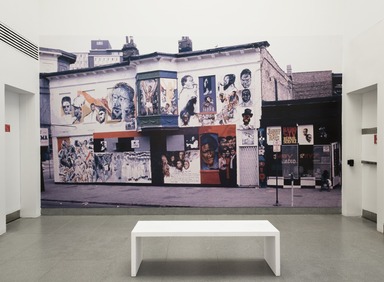
Soul of a Nation: Art in the Age of Black Power, Friday, September 14, 2018 – Sunday, February 03, 2019 (Image: DIG_E_2018_Soul_Of_A_Nation_31_PS11.jpg Photo: Jonathan Dorado photograph, 2018)

Soul of a Nation: Art in the Age of Black Power, Friday, September 14, 2018 – Sunday, February 03, 2019 (Image: DIG_E_2018_Soul_Of_A_Nation_32_PS11.jpg Photo: Jonathan Dorado photograph, 2018)

Soul of a Nation: Art in the Age of Black Power, Friday, September 14, 2018 – Sunday, February 03, 2019 (Image: DIG_E_2018_Soul_Of_A_Nation_33_PS11.jpg Photo: Jonathan Dorado photograph, 2018)

Soul of a Nation: Art in the Age of Black Power, Friday, September 14, 2018 – Sunday, February 03, 2019 (Image: DIG_E_2018_Soul_Of_A_Nation_34_PS11.jpg Photo: Jonathan Dorado photograph, 2018)

Soul of a Nation: Art in the Age of Black Power, Friday, September 14, 2018 – Sunday, February 03, 2019 (Image: DIG_E_2018_Soul_Of_A_Nation_35_PS11.jpg Photo: Jonathan Dorado photograph, 2018)
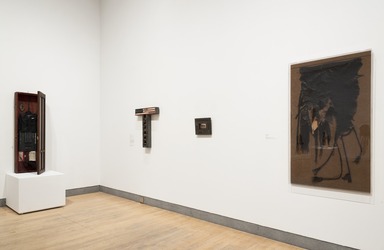
Soul of a Nation: Art in the Age of Black Power, Friday, September 14, 2018 – Sunday, February 03, 2019 (Image: DIG_E_2018_Soul_Of_A_Nation_36_PS11.jpg Photo: Jonathan Dorado photograph, 2018)

Soul of a Nation: Art in the Age of Black Power, Friday, September 14, 2018 – Sunday, February 03, 2019 (Image: DIG_E_2018_Soul_Of_A_Nation_37_PS11.jpg Photo: Jonathan Dorado photograph, 2018)

Soul of a Nation: Art in the Age of Black Power, Friday, September 14, 2018 – Sunday, February 03, 2019 (Image: DIG_E_2018_Soul_Of_A_Nation_38_PS11.jpg Photo: Jonathan Dorado photograph, 2018)
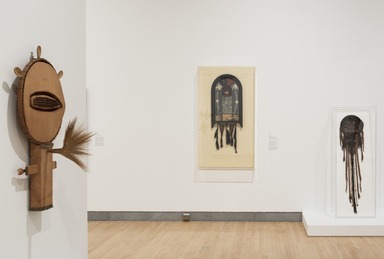
Soul of a Nation: Art in the Age of Black Power, Friday, September 14, 2018 – Sunday, February 03, 2019 (Image: DIG_E_2018_Soul_Of_A_Nation_39_PS11.jpg Photo: Jonathan Dorado photograph, 2018)
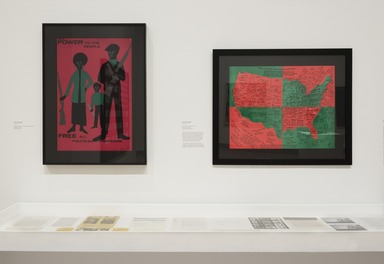
Soul of a Nation: Art in the Age of Black Power, Friday, September 14, 2018 – Sunday, February 03, 2019 (Image: DIG_E_2018_Soul_Of_A_Nation_40_PS11.jpg Photo: Jonathan Dorado photograph, 2018)
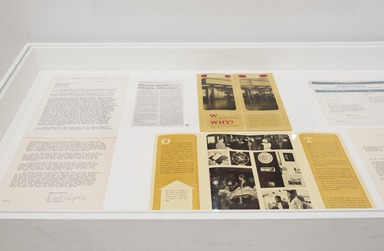
Soul of a Nation: Art in the Age of Black Power, Friday, September 14, 2018 – Sunday, February 03, 2019 (Image: DIG_E_2018_Soul_Of_A_Nation_41_PS11.jpg Photo: Jonathan Dorado photograph, 2018)
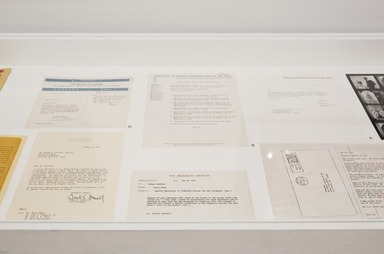
Soul of a Nation: Art in the Age of Black Power, Friday, September 14, 2018 – Sunday, February 03, 2019 (Image: DIG_E_2018_Soul_Of_A_Nation_42_PS11.jpg Photo: Jonathan Dorado photograph, 2018)
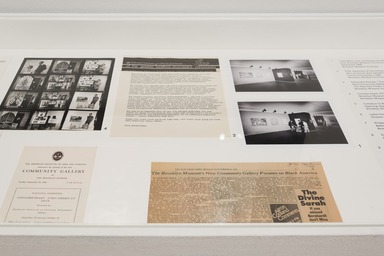
Soul of a Nation: Art in the Age of Black Power, Friday, September 14, 2018 – Sunday, February 03, 2019 (Image: DIG_E_2018_Soul_Of_A_Nation_43_PS11.jpg Photo: Jonathan Dorado photograph, 2018)
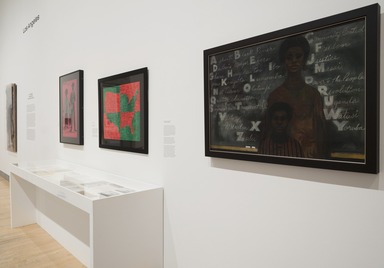
Soul of a Nation: Art in the Age of Black Power, Friday, September 14, 2018 – Sunday, February 03, 2019 (Image: DIG_E_2018_Soul_Of_A_Nation_44_PS11.jpg Photo: Jonathan Dorado photograph, 2018)
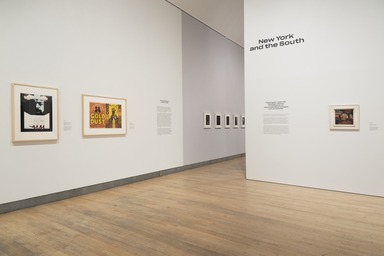
Soul of a Nation: Art in the Age of Black Power, Friday, September 14, 2018 – Sunday, February 03, 2019 (Image: DIG_E_2018_Soul_Of_A_Nation_45_PS11.jpg Photo: Jonathan Dorado photograph, 2018)

Soul of a Nation: Art in the Age of Black Power, Friday, September 14, 2018 – Sunday, February 03, 2019 (Image: DIG_E_2018_Soul_Of_A_Nation_46_PS11.jpg Photo: Jonathan Dorado photograph, 2018)

Soul of a Nation: Art in the Age of Black Power, Friday, September 14, 2018 – Sunday, February 03, 2019 (Image: DIG_E_2018_Soul_Of_A_Nation_47_PS11.jpg Photo: Jonathan Dorado photograph, 2018)
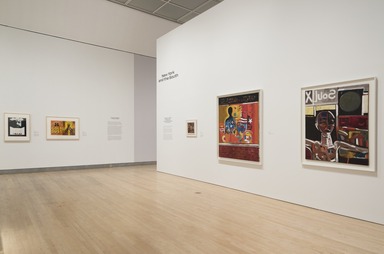
Soul of a Nation: Art in the Age of Black Power, Friday, September 14, 2018 – Sunday, February 03, 2019 (Image: DIG_E_2018_Soul_Of_A_Nation_48_PS11.jpg Photo: Jonathan Dorado photograph, 2018)
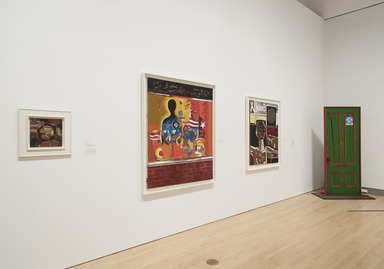
Soul of a Nation: Art in the Age of Black Power, Friday, September 14, 2018 – Sunday, February 03, 2019 (Image: DIG_E_2018_Soul_Of_A_Nation_49_PS11.jpg Photo: Jonathan Dorado photograph, 2018)

Soul of a Nation: Art in the Age of Black Power, Friday, September 14, 2018 – Sunday, February 03, 2019 (Image: DIG_E_2018_Soul_Of_A_Nation_50_PS11.jpg Photo: Jonathan Dorado photograph, 2018)
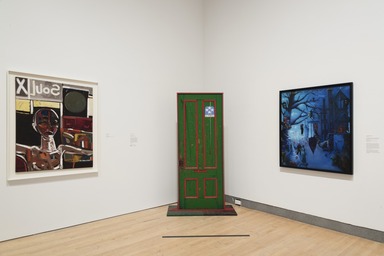
Soul of a Nation: Art in the Age of Black Power, Friday, September 14, 2018 – Sunday, February 03, 2019 (Image: DIG_E_2018_Soul_Of_A_Nation_51_PS11.jpg Photo: Jonathan Dorado photograph, 2018)

Soul of a Nation: Art in the Age of Black Power, Friday, September 14, 2018 – Sunday, February 03, 2019 (Image: DIG_E_2018_Soul_Of_A_Nation_52_PS11.jpg Photo: Jonathan Dorado photograph, 2018)

Soul of a Nation: Art in the Age of Black Power, Friday, September 14, 2018 – Sunday, February 03, 2019 (Image: DIG_E_2018_Soul_Of_A_Nation_53_PS11.jpg Photo: Jonathan Dorado photograph, 2018)
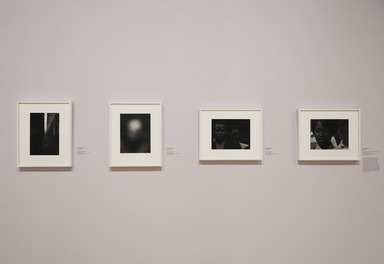
Soul of a Nation: Art in the Age of Black Power, Friday, September 14, 2018 – Sunday, February 03, 2019 (Image: DIG_E_2018_Soul_Of_A_Nation_54_PS11.jpg Photo: Jonathan Dorado photograph, 2018)

Soul of a Nation: Art in the Age of Black Power, Friday, September 14, 2018 – Sunday, February 03, 2019 (Image: DIG_E_2018_Soul_Of_A_Nation_55_PS11.jpg Photo: Jonathan Dorado photograph, 2018)

Soul of a Nation: Art in the Age of Black Power, Friday, September 14, 2018 – Sunday, February 03, 2019 (Image: DIG_E_2018_Soul_Of_A_Nation_56_PS11.jpg Photo: Jonathan Dorado photograph, 2018)
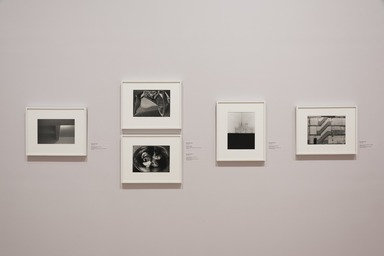
Soul of a Nation: Art in the Age of Black Power, Friday, September 14, 2018 – Sunday, February 03, 2019 (Image: DIG_E_2018_Soul_Of_A_Nation_57_PS11.jpg Photo: Jonathan Dorado photograph, 2018)
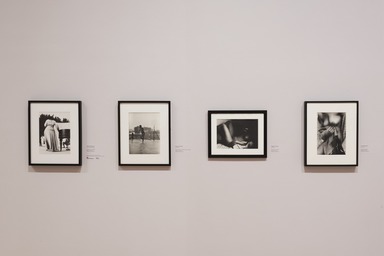
Soul of a Nation: Art in the Age of Black Power, Friday, September 14, 2018 – Sunday, February 03, 2019 (Image: DIG_E_2018_Soul_Of_A_Nation_58_PS11.jpg Photo: Jonathan Dorado photograph, 2018)

Soul of a Nation: Art in the Age of Black Power, Friday, September 14, 2018 – Sunday, February 03, 2019 (Image: DIG_E_2018_Soul_Of_A_Nation_59_PS11.jpg Photo: Jonathan Dorado photograph, 2018)

Soul of a Nation: Art in the Age of Black Power, Friday, September 14, 2018 – Sunday, February 03, 2019 (Image: DIG_E_2018_Soul_Of_A_Nation_60_PS11.jpg Photo: Jonathan Dorado photograph, 2018)
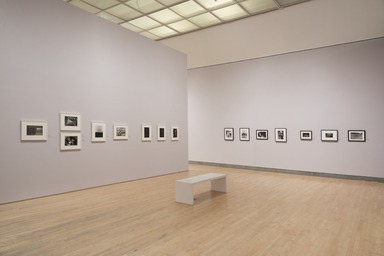
Soul of a Nation: Art in the Age of Black Power, Friday, September 14, 2018 – Sunday, February 03, 2019 (Image: DIG_E_2018_Soul_Of_A_Nation_61_PS11.jpg Photo: Jonathan Dorado photograph, 2018)

Soul of a Nation: Art in the Age of Black Power, Friday, September 14, 2018 – Sunday, February 03, 2019 (Image: DIG_E_2018_Soul_Of_A_Nation_62_PS11.jpg Photo: Jonathan Dorado photograph, 2018)
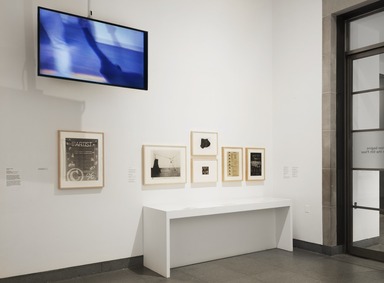
Soul of a Nation: Art in the Age of Black Power, Friday, September 14, 2018 – Sunday, February 03, 2019 (Image: DIG_E_2018_Soul_Of_A_Nation_63_PS11.jpg Photo: Jonathan Dorado photograph, 2018)

Soul of a Nation: Art in the Age of Black Power, Friday, September 14, 2018 – Sunday, February 03, 2019 (Image: DIG_E_2018_Soul_Of_A_Nation_64_PS11.jpg Photo: Jonathan Dorado photograph, 2018)
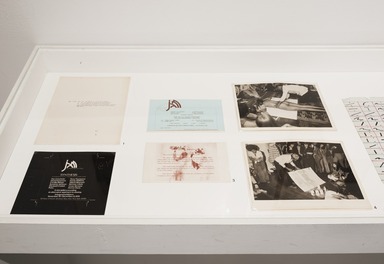
Soul of a Nation: Art in the Age of Black Power, Friday, September 14, 2018 – Sunday, February 03, 2019 (Image: DIG_E_2018_Soul_Of_A_Nation_65_PS11.jpg Photo: Jonathan Dorado photograph, 2018)
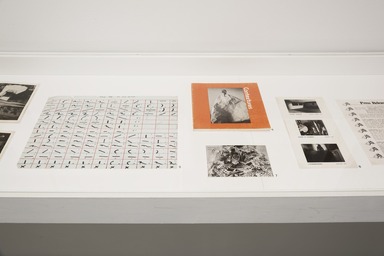
Soul of a Nation: Art in the Age of Black Power, Friday, September 14, 2018 – Sunday, February 03, 2019 (Image: DIG_E_2018_Soul_Of_A_Nation_66_PS11.jpg Photo: Jonathan Dorado photograph, 2018)

Soul of a Nation: Art in the Age of Black Power, Friday, September 14, 2018 – Sunday, February 03, 2019 (Image: DIG_E_2018_Soul_Of_A_Nation_67_PS11.jpg Photo: Jonathan Dorado photograph, 2018)
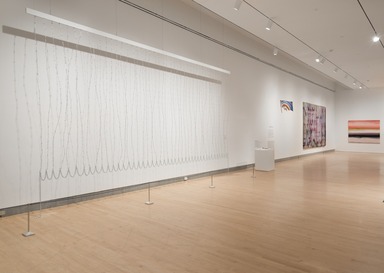
Soul of a Nation: Art in the Age of Black Power, Friday, September 14, 2018 – Sunday, February 03, 2019 (Image: DIG_E_2018_Soul_Of_A_Nation_68_PS11.jpg Photo: Jonathan Dorado photograph, 2018)

Soul of a Nation: Art in the Age of Black Power, Friday, September 14, 2018 – Sunday, February 03, 2019 (Image: DIG_E_2018_Soul_Of_A_Nation_69_PS11.jpg Photo: Jonathan Dorado photograph, 2018)
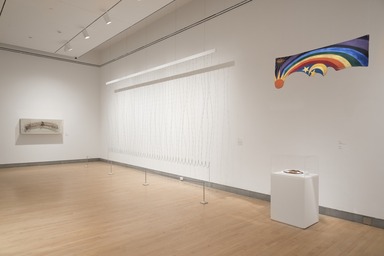
Soul of a Nation: Art in the Age of Black Power, Friday, September 14, 2018 – Sunday, February 03, 2019 (Image: DIG_E_2018_Soul_Of_A_Nation_70_PS11.jpg Photo: Jonathan Dorado photograph, 2018)

Soul of a Nation: Art in the Age of Black Power, Friday, September 14, 2018 – Sunday, February 03, 2019 (Image: DIG_E_2018_Soul_Of_A_Nation_71_PS11.jpg Photo: Jonathan Dorado photograph, 2018)
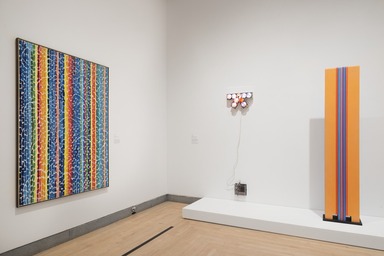
Soul of a Nation: Art in the Age of Black Power, Friday, September 14, 2018 – Sunday, February 03, 2019 (Image: DIG_E_2018_Soul_Of_A_Nation_72_PS11.jpg Photo: Jonathan Dorado photograph, 2018)
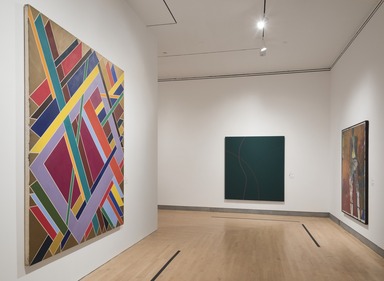
Soul of a Nation: Art in the Age of Black Power, Friday, September 14, 2018 – Sunday, February 03, 2019 (Image: DIG_E_2018_Soul_Of_A_Nation_73_PS11.jpg Photo: Jonathan Dorado photograph, 2018)
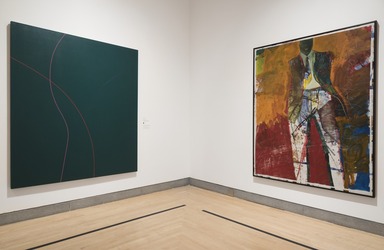
Soul of a Nation: Art in the Age of Black Power, Friday, September 14, 2018 – Sunday, February 03, 2019 (Image: DIG_E_2018_Soul_Of_A_Nation_74_PS11.jpg Photo: Jonathan Dorado photograph, 2018)

Soul of a Nation: Art in the Age of Black Power, Friday, September 14, 2018 – Sunday, February 03, 2019 (Image: DIG_E_2018_Soul_Of_A_Nation_75_PS11.jpg Photo: Jonathan Dorado photograph, 2018)

Soul of a Nation: Art in the Age of Black Power, Friday, September 14, 2018 – Sunday, February 03, 2019 (Image: DIG_E_2018_Soul_Of_A_Nation_76_PS11.jpg Photo: Jonathan Dorado photograph, 2018)

Soul of a Nation: Art in the Age of Black Power, Friday, September 14, 2018 – Sunday, February 03, 2019 (Image: DIG_E_2018_Soul_Of_A_Nation_77_PS11.jpg Photo: Jonathan Dorado photograph, 2018)

Soul of a Nation: Art in the Age of Black Power, Friday, September 14, 2018 – Sunday, February 03, 2019 (Image: DIG_E_2018_Soul_Of_A_Nation_78_PS11.jpg Photo: Jonathan Dorado photograph, 2018)
Soul of a Nation: Art in the Age of Black Power
-
The Brooklyn Museum Community Gallery
The Brooklyn Museum Community Gallery was formed in 1968, in response to demands made by local Black artists for their work to be shown in the Brooklyn Museum. With funding from the New York State Council on the Arts and an anonymous donor, the Museum hired Henri Ghent as director and coordinator of the Gallery. A respected curator, Ghent was an active participant in the Black Emergency Cultural Coalition, leading protests and negotiations at the Whitney Museum of American Art and the Metropolitan Museum of Art.
The Gallery’s inaugural exhibition opened that September and was organized in collaboration with the activist group Federated Institutes of Cultural Enrichment (FICE). Titled Contemporary Afro-American Arts, it featured painting, sculpture, ceramics, and audio-visual works by Black artists from Bedford-Stuyvesant and Harlem.
Throughout his four-year? tenure at the Museum, Ghent organized fifty-five canon-expanding exhibitions, including Contemporary Puerto Rican Artists (1969); Touch’N’See (1970), presenting works for the blind to experience through touch; and Native North American Art: Contemporary Works by American Indian Artists (1972). In 1971 Ghent was fired from the Museum, triggering a critical response from the community, artists who had exhibited in the Gallery, and cultural leaders. However, the Community Gallery continued after Ghent’s dismissal, exhibiting local artists’ works until it closed in 1986. -
Soul of a Nation: Art in the Age of Black Power
This exhibition presents the complex work of Black artists who—at a time of dizzying political, social, and aesthetic revolution—produced some of the most innovative and electric art of the twentieth century.
The works of art in Soul of a Nation were made between 1958 and 1983 during a struggle for liberation. Despite the gains of the Civil Rights Movement, in the late 1960s African Americans continued to experience systematic discrimination and acute racial violence at the hands of white citizens and the state. Facing intransigent injustice, and inspired by the fights for independence in Africa, Latin America, and Asia, Black Americans began to articulate a more urgent demand for complete—and often separate—citizenship, with its own aesthetics, ushering in a new political and cultural movement: Black Power.
At a time of sweeping national change—from second-wave feminism to protests against the Vietnam War, to the "space race" to land astronauts on the moon—Black artists addressed the challenges of the era by boldly questioning, at a fundamental level, what a work of art could be, promoting the use of new materials and inventive techniques as radical as the times.
No single subject or single style exemplifies the art made in the age of Black Power. Far from it. While all the artists represented here were innovators, they worked in various ways, drew from disparate sources, and took different stances toward current events. The exhibition embraces a wide diversity of work.
The first half of the exhibition, on this floor, considers these differences geographically, beginning in New York in 1963, just prior to the onset of the Black Power Movement. It moves on to examine how the long histories of Black life and art-making within specific areas—cities in the Northeast and the South, along with Los Angeles, the Bay Area, and Chicago—informed the work created in these locales during the Black Power era.
The second half of the exhibition, on the fourth floor, takes a different tack. It is organized around aesthetic innovations primarily in painting and sculpture during the Black Power period, up to the movement's decline in the mid-1970s and the emergence of multiculturalism in the 1980s. Though growing out of the same political context, the new ways of making art presented here sometimes intersected with, and other times ran parallel to, explicit Black liberation goals.
Driven by a range of motivations and using a variety of approaches, the artists in Soul of a Nation gave compelling visual form to a transformative moment in American history.
-
New York: The Spiral Group
The Spiral Group was a collective of fifteen painters formed by Charles Alston, Romare Bearden, Norman Lewis, and Hale Woodruff in the summer of 1963 with the immediate purpose of organizing a bus to take New York-based African American artists to the March on Washington for Jobs and Freedom. They subsequently began meeting in Bearden's studio in downtown Manhattan to discuss how their art might relate to current political goals, and whether, and how, a collective "Negro" aesthetic could exist. Bearden offered up collage as a potential model for collaborative art-making, a process that would become his signature. While some artists chose to work in figuration and others in abstraction, still others—including Alston, Bearden, Lewis, and Emma Amos—moved between the two or considered both simultaneously.
Ultimately, the group did not agree on a comprehensive aesthetic, but it did mount one group show, in Greenwich Village in 1965, the last year it convened. The single organizing principle—that all works would be rendered exclusively in black-and-white—held both aesthetic and social resonance. Activism aimed at art institutions was not an explicit goal for Spiral, but within the context of the highly segregated New York art world, this small, self-organized group show was a crucial opportunity for exhibiting, even for artists who were by then well into their careers.
-
New York: The Kamoinge Workshop and Roy DeCarava
In 1963, the same year the Spiral group of painters convened, a group of Black photographers also gathered in Harlem, naming themselves the Kamoinge Workshop (from the word meaning "a group of people working together" in the Kenyan language Kikuyu). Kamoinge did not seek a specific political goal but instead functioned as a collective to support the work of Black photographers. Recognizing the necessity for public display, it also mounted exhibitions of its members' work. Some of them later went on to found an international magazine called The Black Photographers Annual in 1973. The Kamoinge Workshop continues to be active.
The first leader of the Kamoinge group was Roy DeCarava, one of the first Black photographers to establish a successful career as an independent artist rather than as a photojournalist or studio portraitist. He pioneered the use of velvety shadow and a restrictive, dark tonal range to lend his images a contemplative, poetic mood. Though Kamoinge members established their own respective artistic styles, the lyrical influence of DeCarava was strong, and great attention continued to be paid to the everyday lives of Black people of various stations in the city, including children, musicians, and activists. -
From Civil Rights to Black Power
The 1693 March on Washington for Jobs and Freedom, along with other protests and campaigns, contributed to landmark legislative victories, including the passage of the Civil Rights Act of 1964, which banned employment discrimination and segregation in public spaces. Nevertheless, a growing number of Black Americans were dissatisfied with both the scope and the rate of progress, and the violence they had to endure to obtain even the slightest of gains.
The violent events of 1965–68 fed their sense of urgency. In February 1965 political leader Malcolm X was assassinated. The next month, protesters marching from Selma to Montgomery, Alabama, were ruthlessly beaten by state troopers. After published images of the violence at the march sparked public condemnation, the Voting Rights Act was passed in August 1965. The next year, activist James Meredith of the Student Non-Violent Coordinating Committee (SNCC) was wounded by a white gunman during his solo protest march. In response, Stokely Carmichael (later Kwame Ture) made his famous call for "Black Power," advocating Black community defense, pride, and economic independence. His demand was rooted in decades-long Black community organizing for self-determination, as epitomized by the grassroots approach of activists such as Ella Baker and Fannie Lou Hamer. Black activists connected their struggle to a global anti-imperialist agenda, including decolonization efforts in Africa and the continuing Cuban Revolution. For many, the assassination of Martin Luther King, Jr., on April 1968, marked an end to any remaining hope of achieving American racial justice through nonviolent means.
Artists across the country were among those galvanized by the political turmoil of 1965–68. The murder of Malcolm X impelled poet and playwright LeRoi Jones to establish the Black Arts Repertory Theatre/School in Harlem, a space for revolutionary drama. Jones subsequently changed his name to Amiri Baraka. Los Angeles artists Betye Saar state: "I was really motivated by the assassination of Martin Luther King in 1968. Before that I hadn't felt any pressure to make political art. . . . But the death of Martin Luther King really did it. The images on television were pretty brutal."
-
New York: Revolutionary Images and Art World Activism
For many Black artists working in New York, the Black Power period encouraged bold new imagery growing out of resistance to oppression, particularly the use of the flag and the fist symbolizing Black solidarity. Much of the work in this section is figurative painting, which endured among certain Black and other artists in the mid-1960s, even as others began considering abstract forms. Artists such as Faith Ringgold and Benny Andrews drew on a variety of artistic styles, including Pop art and realism.
Black artists in New York also engaged in activism, coming together to demand changes within an art world that itself reflected the segregation and discriminatory practices of the country at large. In 1969 a group of artists formed the Black Emergency Cultural Coalition (BECC) to advocate for the greater representation of African American artists and the hiring of African American curators in New York City museums. Some arts activists established their own institutions: the Studio Museum in Harlem was founded in 1968, as was the Brooklyn Museum's Community Gallery, and Cinque Gallery followed in 1969. Though centered on people of African descent, the Black Power Movement inspired the liberatory campaigns of other racial and ethnic groups: for example, El Museo del Barrio, focusing on Caribbean and Latinx artists of all races, was formed in 1969.
As a result of these efforts, throughout the 1970s some artists did find recognition within a mainstream museum context. Alma Thomas became the first African American woman to have a solo exhibition at the Whitney Museum of American Art, in 1972. A year earlier, the Whitney held an exhibition called Contemporary Black Artists in America, but the show was protested by members of the BECC for its failure to employ a Black curator. -
Washington, Nashville, Talladega, Atlanta: Art Education at Historically Black Colleges and Universities
A number of Black artists worked as educators during this time, including Dr. David Driskell, who in the late 1960s taught at Howard University in Washington, D.C., and Talladega College in Talladega, Alabama.
Within a context of segregation by law, historically Black colleges and universities (HBCUs) such as Fisk University, in Nashville, Tennessee, along with Howard and Talladega, were essential to the education of generations of Black students and artists, including Stokely Carmichael (later Kwame Ture), LeRoi Jones (later Amiri Baraka), and Maya Angelou. Both John T. Riddle and Lev T. Mills took posts at Spelman College in Atlanta in the early 1970s. Artist Lois Mailou Jones also taught at Howard University for decades.
While teaching art and/or art history, HBCU-trained artists persisted in their studio practices. Many of them incorporated imagery related to the political and cultural moment, as seen in Driskell's use of the flag and Mills's quasi-portrait of Amiri Baraka. These instructors also recognized the dual need for arts education and institutional recognition. At the recommendation of artist and educator Charles White, Driskell presented a proposal that would later become Two Centuries of Black American Art, 1750–1950, the groundbreaking 1976 exhibition at the Los Angeles County Museum of Art that was one of the first comprehensive surveys of African American art and traveled to the Brooklyn Museum. -
The Bay Area: The Black Panthers and Emory Douglas
Responding to the Black Power call for self-determination, in 1966 Oakland activists Bobby Seale and Huey Newton founded the Black Panther Party for Self-Defense, a radical political organization that aimed to protect residents of African American neighborhoods from police brutality through its own armed patrols. They later expanded their party's plan into a broad social agenda, including reparations, the dismantling of a corrupt prison system, and improved housing and education. They also advocated for wellness and health care, leading a Free Breakfast for School Children program and administering basic preventive medical care through free clinics.
After becoming the party's minister of culture in 1967, Emory Douglas overhauled its newspaper, The Black Panther, illustrating most issues with his graphics on the front and back covers. Douglas developed a singular, instantly recognizable style that made vivid his themes—including Black solidarity, police brutality, and poverty—through thick black outlining, strategic use of bold color, and collage elements. Douglas also created images supporting Black troops abroad, condemning the Vietnam War, and expressing solidarity with Native peoples.
With a mission of reaching beyond the Bay Area to the country in general, these and other Black Panther images were displayed widely in newspapers and advertisements for actions, on posters and protest signs, and even on holiday cards. -
Chicago: OBAC and AfriCOBRA
The Organization of Black American Culture (OBAC; pronounced oh-bah-see) was a group of Black artists on the South Side of Chicago who came together in 1967 to support the Black liberation struggle. One of is most significant projects was the Wall of Respect, an outdoor mural on the South Side. The Wall was intended to inspire the community by featuring images of Black heroes—civic leaders, writers, musicians, sports stars, and dancers—and served as a gathering place for poetry readings, music, and performances. It sparked a wave of murals in African American neighborhoods nationwide.
A year later, the assassination of Martin Luther King, Jr. brought a renewed sense of urgency among artists. A number of former OBAC members founded AfriCOBRA (African Commune of Bad Relevant Artists), which sought a more direct impact on liberation causes. The artists aimed to create uplifting images, including portraits of ordinary people as well as political leaders such as Malcolm X and Angela Davis. They developed a particular aesthetic vocabulary marked by bright "coolade" colors and a kaleidoscopic style that evoked collage or sometimes included mixed media and text. Member Jae Jarrell made garments that were wearable statements. The group's effusive style was conceived as countering European modes of art-making that these artists found constrained and affected.
While the AfriCOBRA artists aimed for their work to be experienced by broad audiences of Black people in a community setting, they also participated in exhibitions at more formal venues, including two at the Studio Museum in Harlem. After the first of these shows, visitors were polled on their favorite work, to be produced as a print. -
Painting Abstraction and Figuration
By the late 1960s in New York, painting was supposedly in decline, and some in the art world even called it "dead," as artists increasingly began to pursue Conceptual art—which favored ideas over images—and performance. Nevertheless, a large contingent of painters continued to work innovatively in painting, some pursuing abstraction and others portraiture and the bold imagery of Pop art. Like the Spiral artists, many moved back and forth between figuration and abstraction or incorporated elements of both.
Many abstract artists in the late 1960s, rather than working in a gestural or expressionistic style, instead looked to geometry. William T. Williams and other artists, including Virginia Jaramillo and Daniel LaRue Johnson, used the basic visual elements of color, shape, and line to create compositions that question how we perceive space. These artists began showing together in both exclusively Black and interracial shows in the early 1970s.
The tension between abstraction and figuration cut across the entire art world, but it was further complicated for Black artists. Some of them felt that they should all produce images of Black people, to advance political and cultural causes. Charles White, for example, sought to portray Black subjects with dignity.
But while many Black artists, including Emma Amos, Barkley Hendricks, and Raymond Saunders, continued to work in a figurative mode, they did not always see themselves as creating portraits with the same political intent as the Black hero portraiture of AfriCOBRA. For many Black (and non-Black) artists at this moment, the very idea of painting the Black figure—rarely seen in Euro-American fine art—was a revolutionary act. Other artists, however, such as Raymond Saunders, did not see this subject matter as political at all.
-
Delineating the Body
A number of Black artists working in Los Angeles experimented with fresh approaches to the figure using the tools of drawing and printmaking. Charles White's longtime figurative drawing practice increasingly incorporated abstract elements. Timothy Washington, White's student at Otis Art Institute, where White taught for decades, developed a technique of etching into enamel paint applied to sheets of metal. In 1968 David Hammons, another student of White's, started making body prints by coating himself and others with vegetable fat and pressing their bodies onto printing paper before applying pigment to reveal the image on the surface.
The works in this section were included in Three Graphic Artists (1968), the first exhibition of Black art at the Los Angeles County Museum of Art to result from campaigning by the Black Arts Council (BAC). The group continued to advocate for shows by artists of color, preparing the way for David Driskell's Two Centuries of Black American Art, 1750–1950 in 1976. -
Rethinking the Surface
In the 1970s many Black artists experimented with painting and sculpture by manipulating the surface. Jack Whitten created a rake-like tool called a developer, which he ran across a canvas stretched out on the studio floor. Ed Clark used a push broom to achieve wide paint strokes. Howardena Pindell included novel items, such as glitter and hole-punch paper chads, to texture her paintings and achieve a shimmering effect. William T. Williams played with unusual paint application so that the canvas's shine would alter depending on where the viewer stood.
Ongoing advances in the scientific exploration of outer space, and the prospect of astronauts reaching the moon, inspired a number of these artists. Although her earlier works focused on earthly landscapes, by the early 1970s Alma Thomas evoked the expands beyond our atmosphere in her paintings. The cut and polished surfaces of Fred Eversley's resin sculptures reflected the synthetic materials of the aerospace industry, in which he had worked as an engineer. -
Foregrounding Movement and Action
The canvas itself became a focus of experimentation in the 1970s. Irreverently moving the artwork away from the wall and suspending it in mid-air, many painters suggested that the painting could interact with the viewer in three-dimensional space, as in performance art.
Sam Gilliam rid himself of the stretcher altogether, letting his canvases drape against the wall, or across walls, instead (as seen in the Painting Abstraction and Figuration section). Joe Overstreet also removed his canvases from the wall, working them into quasi-sculptures. Inspiration for these structures was not just performance, but the fabric enclosure of a tent and its related ideas of nomadism and the always present possibility of change. Evoking a ritual or otherwise spiritual context, a number of Betye Saar's assemblages were also made to be hung and experienced rather than simply seen on the wall.
Other artists made objects intended to be used in an actual performance. Senga Nengudi's stretched-pantyhose sculptures were meant for human interaction and at times became sites for performances by the artist and friends. -
Making Space for Experimental Black Art: Just Above Midtown Gallery
Recognizing the persistence of racial discrimination in the art world and the continuing need for exhibition space for contemporary Black artists—especially experimental ones—Linda Goode Bryant founded Just Above Midtown gallery (JAM) in 1974. It was active until 1986.
Bryant had a deep commitment to displaying new, experimental work, such as that of young New York photographer Dawoud Bey, represented here by selected images from his Harlem, U.S.A. series, and that of painter Howardena Pindell and sculptor and performance artist Senga Nengudi. Though located in New York (first on Fifty-seventh Street and later on Franklin Street), JAM regularly featured artists from Los Angeles, many of whom, including David Hammons, had moved to New York City by the early 1970s looking to establish mainstream careers.
While the gallery displayed work of all kinds, it featured a notably rich selection of performance art. Houston Conwill debuted his Cake Walk, later staged at the Museum of Modern Art and other museums around the nation. The gallery also supported Conceptual artist and photographer Lorraine O'Grady's ambitious 1983 interactive performance Art Is . . ., in which she invited Harlem residents to see themselves as the art.
-
May 30, 2018
Featuring over 150 works by more than 60 artists, the exhibition offers a sweeping view of the remarkable art made by Black artists during one of the most crucial periods in American history
The Brooklyn Museum presents the critically acclaimed exhibition Soul of a Nation: Art in the Age of Black Power, an unprecedented look at a broad spectrum of work by African American artists from 1963 to 1983, one of the most politically, socially, and aesthetically revolutionary periods in American history. Soul of a Nation considers the varied ways that Black artists responded to the demands of an urgent moment and brings together for the first time the disparate and innovative practices of more than sixty artists from across the country, offering an unparalleled opportunity to see their significant works side by side. The Brooklyn Museum is the only East Coast venue for this exhibition, which was organized by Tate Modern in London and traveled to Crystal Bridges Museum of American Art in Bentonville, Arkansas, in early 2018. Opening September 14, the Brooklyn presentation will remain on view through February 3, 2019.
Soul of a Nation features more than 150 works of art in a sweeping aesthetic range, from figurative and abstract painting to assemblage, sculpture, photography, and performance. Among the influential artists of the time highlighted in the exhibition are Emma Amos, Frank Bowling, Sam Gilliam, Barkley Hendricks, Betye Saar, Alma Thomas, Jack Whitten, and William T. Williams. The Brooklyn presentation will also include several works by artist and scholar David Driskell, Suzanne Jackson’s Triplical Communications (1969), and a large-scale draped painting by Sam Gilliam titled Carousel Merge (1971). In addition, a monochromatic work by Emma Amos will be on view, as well as two large-scale paintings by British Guyana–born artist Frank Bowling and an abstract push-broom painting by Ed Clark from the late 1970s, which recently joined the Museum’s permanent collection.
The show begins in 1963, before the emergence of the Black Power Movement later in the decade, with the Spiral collective. This group of New York–based painters, including Romare Bearden, Norman Lewis, and Emma Amos, worked in diverse aesthetic styles and explored the role of Black artists in the struggle for civil rights. Also active in New York at the time was the Kamoinge Workshop, a group of photographers who responded to the lack of institutional support and mainstream representation of Black artists by conducting workshops and producing their own gallery shows and portfolios.
The exhibition goes on to trace how artists across the country continued to work in collectives, communities, and individually during the rise of the Black Power Movement. In Los Angeles, years of urban unrest propelled a number of artists to experiment with assemblage and sculpture. Artists such as John Outterbridge and Noah Purifoy made works inspired by the aftermath of the Watts Rebellion of 1965. Emory Douglas, who served as the minister of culture for the Black Panther Party, founded in Oakland, California, in 1966, created striking graphics and illustrations that became powerful symbols of the movement— twenty-four of which are included in the exhibition. In Chicago, a group of artists formed AfriCOBRA, whose manifesto and aesthetic philosophy aimed to empower Black communities. Works by its founding members are on display, including Gerald Williams’s Say It Loud (1969), whose vibrant colors, graphic lettering, and use of black figures were emblematic of the AfriCOBRA style. In New York, painters incorporated symbols of protest, solidarity, and Black pride, while many organized for institutional inclusion. Also featured is artist and professor David Driskell, who drew upon similar themes in his painting, as he worked to organize university art departments across the South and promote scholarship of African American art.
The show also addresses formal concerns and aesthetic innovations across abstraction and figuration in painting and sculpture, featuring such works as Sam Gilliam’s April 4 (1969), Barkley Hendricks’s Blood (Donald Formey) (1975), Frank Bowling’s Texas Louise (1971), and Martin Puryear’s Self (1978). With its central triangular form, Jack Whitten’s powerful Homage to Malcolm (1970) recalls the pyramids that Malcolm X visited on a trip to Africa in 1964, and was painted as a memorial to the late activist. Other works show the emergence of integral figures in Black feminism such as Kay Brown, Faith Ringgold, and Betye Saar, highlighting an important moment of visibility for female artists. The exhibition concludes with a section on Just Above Midtown (JAM), the first commercial gallery space dedicated to showing the work of avant-garde Black artists, notably including artists working in performance, such as Lorraine O’Grady, David Hammons, Senga Nengudi, and others.
The timely exhibition extends the Brooklyn Museum’s trailblazing commitment to a vital period in American art, following its exhibitions Witness: Art and Civil Rights in the Sixties (2014) and We Wanted a Revolution: Black Radical Women, 1965–85 (2017), as well as the Museum’s major acquisition of forty-four works from the Black Arts Movement in 2013.
“With Soul of a Nation, we are honored to highlight the truly exceptional work produced by African American artists during one of the most significant moments in U.S. history and to honor these artists and all those arts professionals, here in Brooklyn and beyond, who have long supported their work,” said Anne Pasternak, Shelby White and Leon Levy Director of the Brooklyn Museum.
Ashley James, Assistant Curator of Contemporary Art, adds: “Artists in this exhibition bravely and variously created art responsive to an urgent time of social, political, and aesthetic rupture, resulting in some of the most striking works created in the late twentieth century. This exhibition adds to an already existing and growing focus on the art produced during the Black Power Movement, an indication of the period’s important and continued resonance with our present as well as the absolute excellence that defines the art of the era.”
Soul of a Nation: Art in the Age of Black Power is organized by Tate Modern in collaboration with Brooklyn Museum and Crystal Bridges Museum of American Art, Bentonville, Arkansas, and curated by Mark Godfrey, Senior Curator, International Art, and Zoe Whitley, Curator, International Art, Tate Modern. The Brooklyn Museum presentation is curated by Ashley James, Assistant Curator, Contemporary Art, Brooklyn Museum.
Leadership support for this exhibition is provided by the Ford Foundation, the Terra Foundation for American Art, and Universal Music Group. Additional support is provided by Christie’s, Raymond Learsy, Saundra Williams-Cornwell and W. Don Cornwell, the Hayden Family Foundation, Carol Sutton Lewis and William Lewis, and Connie Rogers Tilton.
Press Area of Website
View Original

